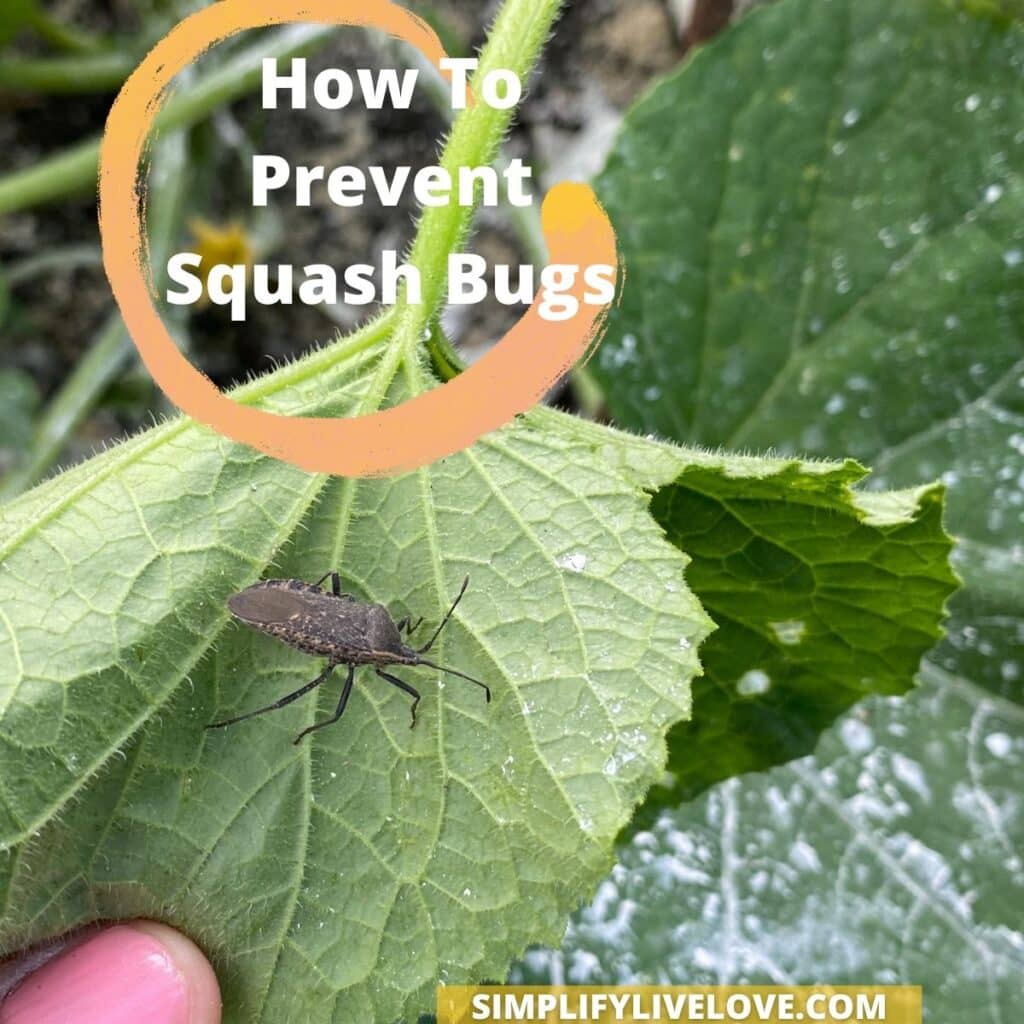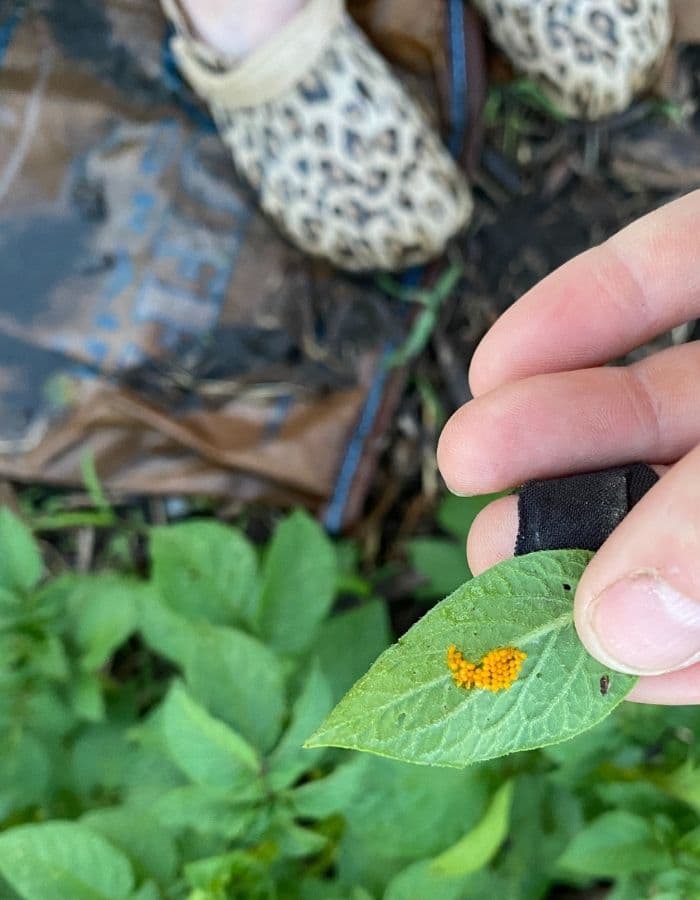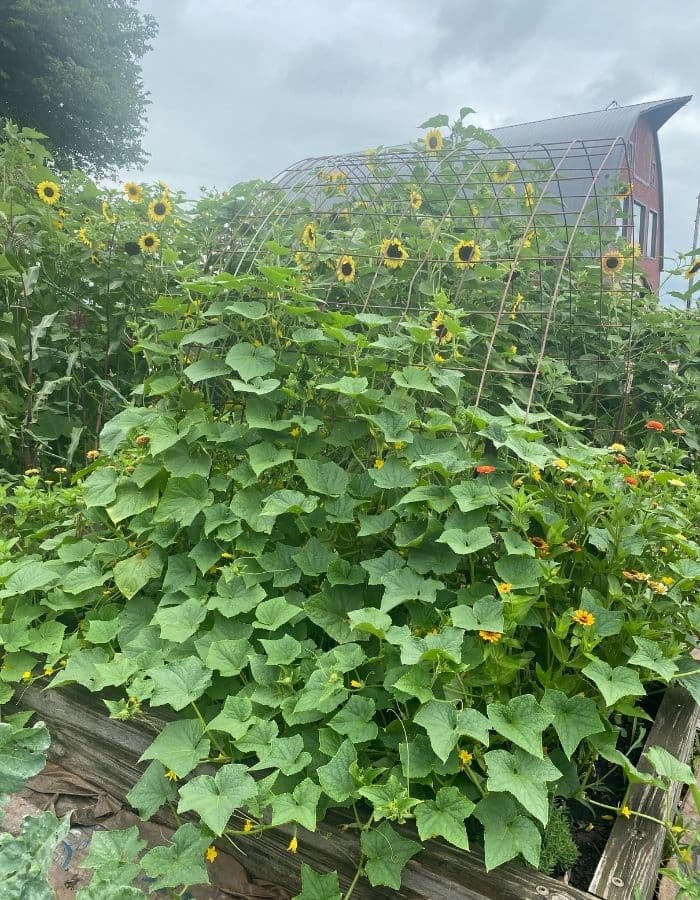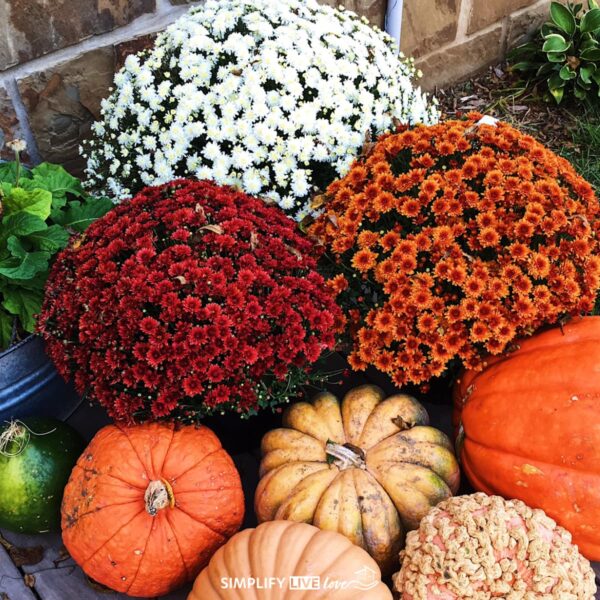11 Ways to Prevent Squash Bugs Naturally: Organic Tips That Work
on Jun 30, 2025
This post may contain affiliate links. Please read our disclosure policy.
Squash bugs can wipe out your zucchini and squash plants almost overnight. These persistent pests damage leaves, stunt growth, and spread quickly. The good news? You don’t need toxic sprays to win this battle.
In this post, you’ll learn natural, low-waste strategies to prevent squash bugs before they take hold—plus tips to get rid of them if they’re already in your garden. Let’s protect your harvest the eco-friendly way.

Quick Summary
A natural, non-toxic guide to preventing squash bugs with smart gardening and good habits.
🌿 Apply mulch & neem oil: Mulch helps keep adult bugs off plants. Neem oil sprays can deter and disrupt hatching.
🕵️♀️ Hand‑pick daily: Look under leaves. Drop adults & egg clusters into soapy water.
🪤 Set traps: Use boards or folded cardboard near vines. Squash bugs gather underneath at night—check and remove them each morning.
🔄 Interrupt their life cycle: After pulling plants, remove debris and till soil. Early weeds and plant bits are bug hideouts.
🐞 Encourage predators: Welcome frogs, toads, ground beetles, and parasitic wasps. These natural allies help keep pests down.
🌱 Use row covers: Cover seedlings until flowering. Then remove covers so pollinators can do their job.
Need help preventing other garden pests? Find more posts in the How to Get Rid Of Series here.
11 Tips for Preventing Squash Bugs Naturally
Controlling squash bugs, Anasa tristis, is a necessity for many gardeners, including me, because they wreak absolute chaos on plants in the squash and cucurbit family including:
- Winter Squash
- Zucchini
- Pumpkins
- Cucumber
- Cantaloupe
- Watermelon
Squash bug damage in the vegetable garden is no joke so learning how to kill squash bugs is an important garden task. Let’s get busy preventing them naturally so we can stop squishing them forever!
- Quick Summary
- 11 Tips for Preventing Squash Bugs Naturally
- How to Get Rid of Squash Bugs
- 1. Handpick and Drown
- 2. Make a Squash Bug Trap
- 3. Break the Lifecycle
- 4. Beneficial Insects
- 5. Use Row Covers
- 6. Trellis Squash and Melons
- 7. Use Companion Plants
- 8. Plant Trap Crops or Resistant Plant Varieties
- 9. Store Bought Natural Pest Controls that Work on Squash Bugs
- 10. Clean Your Garden Well in Fall
- 11. Delay Planting Squash Plants to Early Summer
- Welcome to the HOW TO KILL GARDEN PESTS SERIES!

What do Squash Bugs Look Like?
Adult squash bugs are a dark gray to dark brown with black legs. They’re longer than they are wide – about a half inch long – and their abdomens are kind of spotted or striped.

They are often confused with stink bugs which look similar. But stink bugs are wider and rounder than squash bugs. They also prefer to eat tomato, pepper, and bean plants over squash plants. Stink bugs stink at a simple touch where squash bugs only stink when you squish them.
Stink bugs don’t normally attack in big groups, so their damage is the garden tends to be more minimal compared to the vile squash bugs.
Life Cycle of Squash Bugs
Squash bugs overwinter as unmated adults under plant debris or other suitable shelter. They emerge in late April or early May, searching for friends so they can mate and produce more and more and more offspring.

Squash bugs lay their eggs over a period of several weeks, often in the angles formed by leaf veins on the undersides of leaves. Females deposit about 20 eggs in each egg cluster and squash bug eggs may be tightly clustered or spread a considerable distance apart.

The egg stage only lasts about seven to nine days and then they hatch into the nymphal stage. The nymphs are smaller and light gray in color. They take about 33 days to grow into adult squash bugs.
Unfortunately, the adults are long-lived, surviving an average of about 75 to 130 days, depending on availability and quality of food. That means they survive (and keep mating) the entire summer growing season unless YOU kill them!

Damage Caused by Squash Bugs
My garden nemesis the squash bug sucks the sap out of leaves with its piercing-sucking mouthparts. They cause yellow spots and affect the flow of water and nutrients in the plants.
In addition, squash bug saliva released during feeding carries bacteria toxic to cucurbit plants. A severe infestation can cause wilting, and eventually the plant dies.
Larger, sturdier plants are more tolerant of the damage, but young plants are very susceptible and may die. Squash bugs feed on leaves, vines, and even fruit.
The best way to prevent squash bug damage damage is to get rid of them quickly, before the infestation gets out of hand.
Pin this now to find it later
Pin ItHow to Get Rid of Squash Bugs
So what on earth can you do to get rid of them? I’m glad you asked. Here are 11 methods to prevent or get rid of this nasty pest. As with most garden foe, we’ve found using a combination of these methods and being extra vigilant is the best course of action.
1. Handpick and Drown
The easiest and quickest way to get rid of the bugs is to drown them in soapy water. One of the gardener’s best garden tools is a simple bucket partially filled with water and dish soap.
Carry this bucket with you every day when you inspect your garden.
To get rid of squash bugs, you can cut off or snap off the leaf that’s covered in bugs. Or simply shake them in the water and let them drown. If you don’t like to touch bugs, make sure to wear garden gloves!
Once they are dead, pour the water anywhere without having to worry about them coming back to life.
2. Make a Squash Bug Trap
Make any easy trap by placing a board, pieces of newspaper, or shingles in the garden. During the night, the adults and nymphs will congregate underneath.
Then, every morning, take two hard surfaces and squish the bugs collected. Take great delight in your murderous ways! See, gardening is so therapeutic.
3. Break the Lifecycle
The earlier you detect the nymphs, the better. Adults are harder to kill. At the earliest detection, take immediate steps to eliminate the bugs.
Get rid of egg clusters by scraping eggs off the leaf with a butter knife, or cut the leaf off. You can also use rolled up duct tape as a way to remove the eggs.
Squish the eggs between your fingers, or any two hard surfaces or drop the eggs into your bucket of soapy water. Making sure that the eggs don’t hatch is an important step in getting rid of squash bugs.
4. Beneficial Insects
Beneficial insects like the parasitic tachinid fly have been used with success in California to control squash bug infestations. Tachinid flies are a little like the braconid wasps that lay eggs on hornworms.
Planting dill plants can help attract beneficial and parasitic bugs to your garden.
5. Use Row Covers
Row covers are a great way to keep the bugs in your garden off your plants. To use row covers on squash plants you can either use floating row covers or hooped row covers. It’s also pretty easy to cover a raised bed.

6. Trellis Squash and Melons
Squash bugs like to hide among the plants as they sprawl on the ground. Another good way to prevent squash bugs is to trellis your plants instead of letting them sprawl.
Check out all of these ways you can go vertical in the garden and think about getting your squashes up off the ground this year!
7. Use Companion Plants
Companion plants are always great in the garden to help repel bugs and enhance the flavor of certain crops. Mint is a good companion plant for repelling squash bugs, but we definitely recommend planting mint in containers. It takes over everything and becomes quite invasive.
Other good companion plants for keeping away the squash bugs include:
- Catnip
- Chives
- Garlic
- Onion
- Tansy
- Radishes
- Nasturtiums
- Marigolds
- Calendula
- Bee balm
- Dill
8. Plant Trap Crops or Resistant Plant Varieties
Trap crops can help by attracting bugs you don’t like and helping to keep them off plants you do like. The blue hubbard squash is great at attracting, and retaining squash bugs. Millet also attracts the bugs.
Some squash varieties have natural resistance to squash bugs. If you have a big problem with this garden pest, you might want to consider growing different varieties:
9. Store Bought Natural Pest Controls that Work on Squash Bugs
Diatomaceous Earth (DE)
DE is very sharp on a microscopic level and it dries out and kills many bugs that come into contact with it. Put DE directly on the eggs and around the stems of your plants to help keep squash bugs away.
Neem Oil
Neem oil is another store bought option which can be sprayed on the bugs. Sometimes it’s difficult to spray neem oil everywhere you need to get it to reach these pests, but it can slow the bugs down a bit to make them easier to catch. You can easily buy good-quality neem oil for plants online to get started.
10. Clean Your Garden Well in Fall
Preventing squash bugs in the spring starts with garden prep in the fall. Squash bugs tend to gather together, and hide and they like to overwinter under hidden in debris in your garden.
You can prevent this by cleaning up the debris in your garden each fall. Burn any diseased plants – don’t add them to your compost. Get rid of anything that could be a winter habitat for them.
Think about boards, bricks, leftover plant material. I know I am guilty of leaving all sorts of bricks and boards in my garden!
Make sure you rotate your crops and grow your pumpkins and squash where none grew the last year.
11. Delay Planting Squash Plants to Early Summer
One final way you might be able to prevent squash bug damage in your garden is to delay planting crops they like. Since squash bugs emerge in early spring, denying them a food source is a good way to keep them out.
Instead of planting cucurbits, squashes, and pumpkins around your last frost date, wait until early summer to plant them. Start your seedlings indoors around your last frost date, and them transplant them outside in June. They should still have time to grow and may help you break the squash bug cycle as well.
Do you have a favorite method for preventing and managing squash bugs that we didn’t list? Please share!
Welcome to the HOW TO KILL GARDEN PESTS SERIES!
Who knew gardeners could take such pleasure in murdering annoying garden pests. If you garden, you’ll want to check out on the posts in this HOW TO KILL series. I’m adding new posts to this series each week, so subscribe to my newsletter if you want to know when they’re ready!














I just put bark chips between all my garden boxes. I guess that provides a harbor for squash bugs. Ugh.
I have been using a small butane torch and frying the eggs and adults if I can catch them.